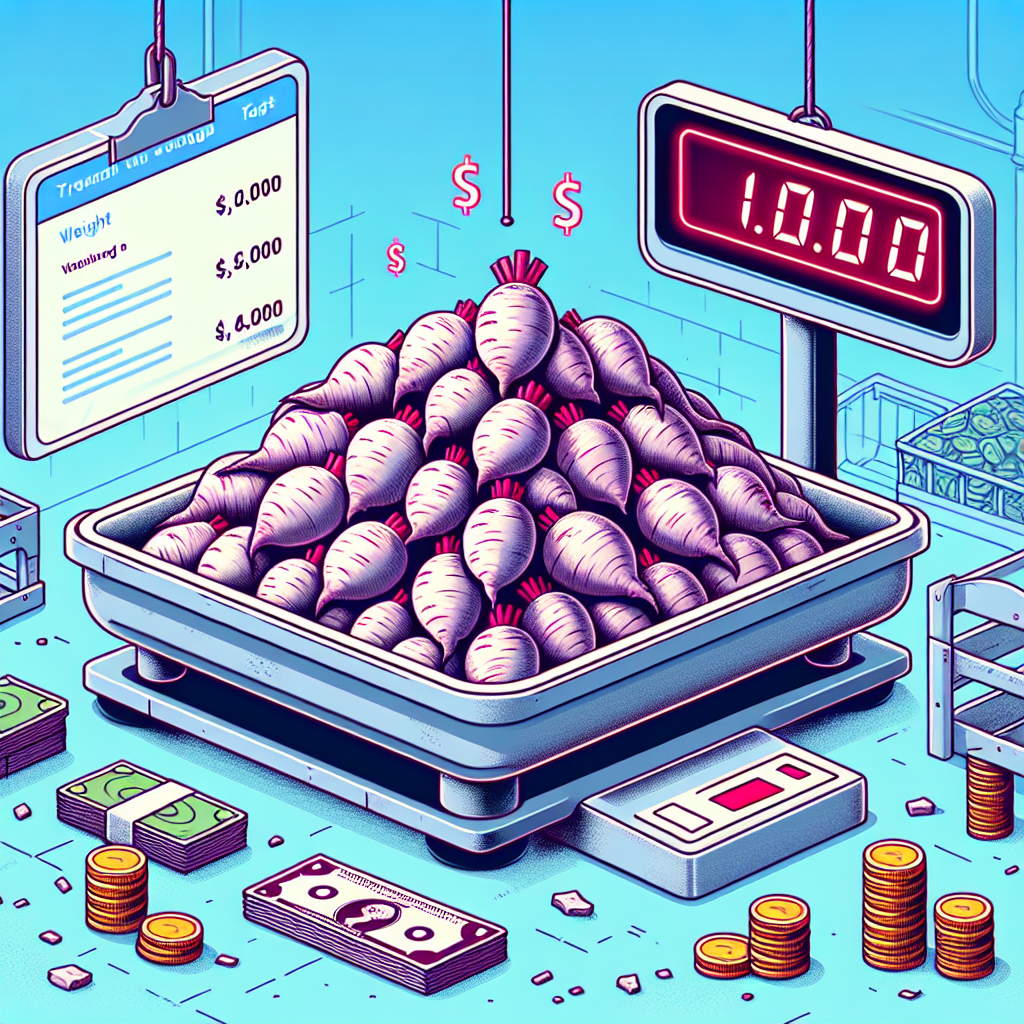
How much is a ton of sugar beets worth
Understanding the Economics of Sugar Beets
Sugar beets are a significant agricultural product globally, primarily used for producing sugar. With the fluctuating market conditions and varying factors affecting agricultural commodities, many farmers and investors often ask, "how much is a ton of sugar beets worth?" This article delves into the various factors influencing the price of sugar beets and provides an overview of the current market conditions affecting their value.
What Are Sugar Beets?
Sugar beets are a root vegetable that is cultivated for its high sugar content. Unlike sugarcane, which primarily grows in tropical climates, sugar beets are typically grown in temperate regions. The sugar extracted from sugar beets accounts for about 20% of the world’s sugar production, with most of the remainder coming from sugarcane.
The Growing Demand for Sugar Beets
The demand for sugar beets is driven by various factors, including:
- The increasing global demand for sugar, driven by population growth and changing consumption patterns.
- The rise in biofuel production, as sugar beets can also be used to produce bioethanol.
- The growing trend of natural sweeteners, with sugar beets being a favored alternative due to its agricultural advantages.
Factors Influencing Sugar Beet Prices
Several factors play a crucial role in determining how much a ton of sugar beets is worth. These include climate conditions, production costs, government policies, and market supply and demand.
Climate Conditions
The weather has a significant impact on sugar beet yield. Ideal growing conditions lead to higher production, resulting in lower prices due to increased supply, whereas adverse weather can reduce yields, causing prices to rise. For instance:
- Excessive rain can lead to root rot, damaging the crop.
- Prolonged droughts can hinder growth, leading to lower yields.
Production Costs
The costs associated with growing sugar beets include seeds, fertilizers, labor, and machinery. As these costs fluctuate, they can impact the profitability of sugar beet farming and, subsequently, the market price of sugar beets.
Government Policies and Subsidies
In many countries, sugar beet farmers benefit from government subsidies that can help stabilize income. Additionally, trade policies and tariffs can affect the price of sugar beets on the international market. For example:
- Subsidies may enhance profitability, encouraging more production and potentially leading to lower prices.
- Restrictions on imports can create a price floor for domestic producers.
Market Supply and Demand
The basic economic principle of supply and demand largely determines sugar beet prices. When supply exceeds demand, prices tend to drop, and when demand exceeds supply, prices increase. The global sugar market's movements directly affect local pork prices.
Current Market Trends for Sugar Beets
As of 2023, the price of sugar beets has exhibited certain trends that are essential to analyze.
Price Fluctuations
Factors such as global sugar prices, production levels, and changes in consumer behavior have all contributed to fluctuating prices of sugar beets. The following table summarizes average prices over the last five years:
| Year | Price per Ton (USD) |
|---|---|
| 2019 | 50 |
| 2020 | 60 |
| 2021 | 55 |
| 2022 | 65 |
| 2023 | 70 |
Regional Price Variations
The price of sugar beets can vary widely by region due to differences in growing conditions, local supply chains, and market access. For example, sugar beet prices may be significantly lower in areas that are oversaturated with production compared to regions that are newer to sugar beet farming.
The Future of Sugar Beet Prices
Several factors will continue to influence the price of sugar beets in the coming years, including:
- Technological advancements in farming techniques that could increase yields.
- Changes in consumer preferences toward sugar alternatives, impacting demand.
- The effects of climate change on production regions.
Investing in Sugar Beets
For those considering entering the sugar beet production market or investing in sugar beet commodities, understanding how much is a ton of sugar beets worth is essential for assessing profitability. It’s important to conduct thorough market research and possibly consult with agricultural economists or market analysts.
Risk Management Strategies
Farming, including sugar beet production, comes with its risks. Here are some strategies to mitigate risks when investing:
- Diversification: Grow a variety of crops to minimize the impact of one failing.
- Insurance: Consider crop insurance designed specifically for sugar beets to protect against loss.
- Market analysis: Regularly update market analyses to anticipate price changes.
Conclusion
In summary, the value of sugar beets, as with any agricultural product, is influenced by multiple external factors, including market demand, production costs, climatic conditions, and government policies. Understanding how much is a ton of sugar beets worth requires a comprehensive analysis of these elements. As the market continues to evolve, staying informed will be crucial for both farmers and investors in the sugar beet industry.
Overall, the future for sugar beets looks promising, provided that proactive strategies are employed to combat the challenges faced by sugar producers. Whether you're a farmer, investor, or interested consumer, a keen awareness of market dynamics is essential to navigate the complexities of this vital agricultural sector.
By Guest, Published on October 23rd, 2024